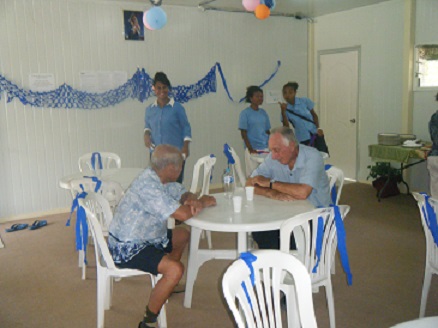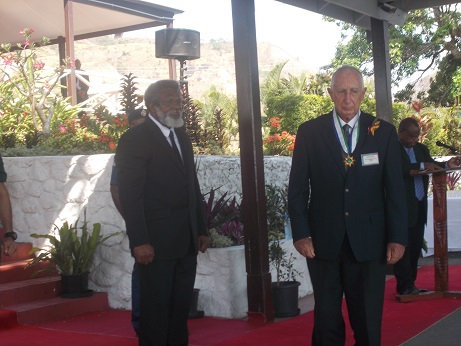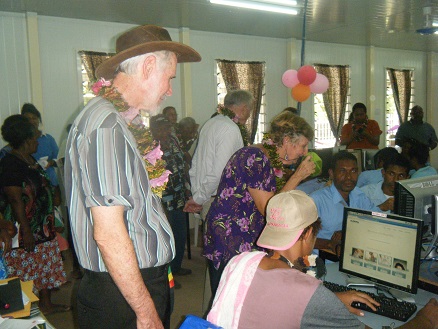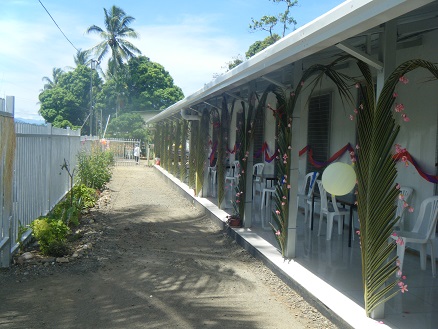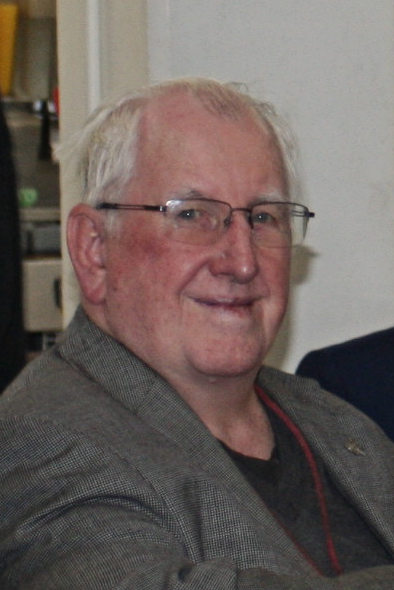Peter MALONE
Acknowledging Tony Young MSC, 85.
Acknowledging Tony Young MSC, 85.
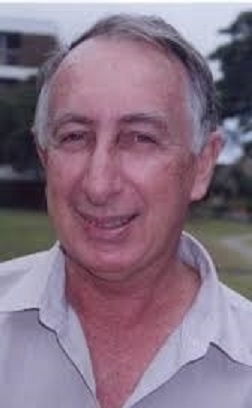
From Melbourne, Tony Young was born on July 10th. 1935. He made his novitiate in 1955 and was professed on February 26th 1956. His studies for the priesthood took place at Sacred Heart Monastery, Croydon, Victoria and was ordained in Melbourne on July 23rd 1962.
In his almost 60 years of priesthood, he has spent most of his ministry in Papua New Guinea, principally in the diocese of Sideia, now Alotau, many years on the island of Nimowa.
In the last decade he has been working in establishing and maintaining the online education institution, Hope Academy – significant for developments in education (and important for these coronavirus times).
Companion of the Order of Star of Melanesia" (CSM), for service to the Catholic Church as a Priest in the Congregation of the Missionaries of the Sacred Heart working for over 50 years in Milne Bay Province.
From Tony Young’s 2017 report indicating the hopes of Hope Academy
Hope Academy began in 2007 as the first online education provider in PNG. For most of the time since then it remained on the fringe of the formal education establishment, and has been regarded by the few who noticed it is an interesting, but probably temporary, initiative.
Certainly, the Academy has had a lot to overcome: a cyclone the trashed years of work, technical and financial problems, unreliable Internet providers and expensive connections, the forced abandonment of the classroom on which much money had been spent: these were a few of the difficulties are nearly forced to closure of the Academy on a number of occasions, including in 2017.
However, during the 10 years of Hope Academy’s existence, the shape of education has gradually changed as the number and quality of the courses offered on the Internet increased very quickly, and as the advantages of the use in education became widely accepted – more quickly, it seems, by students then those whose obligation it is to provide for their education.
In 2017 Hope Academy had nearly 200 students enrolled at Allison, an Internet school-based in Ireland, with a total enrolment of 4 million learners worldwide. Of those nearly 10,000 were from PNG. That makes Allison the second largest education provider in the country. That 10,000 PNG students are being educated at Allison with no discernible cost to the national budget should give a elected Members much food for thought.
Alison, now aligned with Google, has encouraged Hope Academy to host an Allison Learning Centre in PNG, the first of 15 such centres it wants to establish in various countries of the world.
There are still questions to be answered, but if this happens, it will be a feather in the cap of PNG, as well is an affirmation of the worth of the years of generous support from our friends in church, government, and in private life, together with the hard work of our staff, students, and parents. For the first time the continued existence of Hope Academy will have support from a substantial online organisation.

THE DAY OF GRATEFUL HEARTS

Choir practice for Most Sacred Heart.
News from MSC Vietnam: The Day of Grateful Hearts.
With thanks to Quy Thien Bui MSC

Mass for the Most Sacred Heart. Presider: Fr. Hoang, MSC.
Many of us have known very well the house of the Lover of Holy Cross Sisters in Long Hai where Vietnamese MSC Community often choose to have some yearly events such as summer courses of the scholastics, holiday of aspirants, and community outing. Here, we encounter a lot of beautiful memories with people and MSC's events. For this time, we decided to celebrate the Feast of the Most Sacred Heart (19.06.2020) and to include the 25th ordination anniversary of Uncle Thoi and those who have birthday and the coming feast day of saint John the Baptist, saint Paul and Peter the apostles of June. Many reasons for a day making it more meaningful and grateful.

Speech from Fr. Hoang, MSC to Chevalier’s Family.
It took almost three hours from Saigon City to Long Hai. We arrived the place around 5 p.m. and had the Solemnity Mass of the Sacred Heart at 6 o'clock. The chapel was small but full of loving presence of all MSC members: Frs. Hoang, Thoi, Minh, Quang and all Scholaticate brothers together Trong, a postulant. Hoang was the main celebrant and Minh was the preacher. In his homily, he gave an impressive words concerning to the Heart of Christ that all of us is carrying in this world in order to make it known and loved not only among us but also in our society, especially those who are poor and little ones. After the Mass, we had an agape meal outside. It was really a fraternal night when we could share stories and laughed together.

Speech from Fr. Hoang, MSC to Fr. Thoi. MSC (25th ordination anniversary)
On the next morning, we celebrated the Mass of the Immaculate Heart of Mary with the intentions of giving thanks for the 25th ordination of Uncle Thoi and those brothers who have birthday and feast day in June. This was a very special Mass because of the presence of all of members of Chevalier's family: OLSH Sisters, MSC Sisters, Young Lay MSC who came to make it more fervent. Uncle Thoi, who gave a heartfelt homily, mentioned some beautiful features of the Heart of Mary drawn from the Gospel that we could reflect and learn from so that through Her we came to know and love more and more Her Son, Jesus.

A gift from MSC community to Fr. Thoi, MSC.
He also shared a significant memory of his vocation journey attached with the spirituality of heart since he was childhood. It was really a wholehearted celebration that we could feel the love and compassion of the Heart of Christ drawing our hearts into the same family, the Church which our Founder, Jules Chevalier foreseen. Following by the cordial meal that we enjoyed much with delightful foods, some wishes coming from members, and some funny games.

Speech from Fr. Thoi. MSC to Chevalier Family.
All of those days were so grateful that we thanked to God for what He has done and blessed us. The prayer of St. Francis was sung as it was our wish for our presence and mission in the world today.

Chevalier family in Viet Nam.

Fr. Thoi, MSC with 25th ordination anniversary.
Celebrating Martin Wilson, MSC, 90 years of age, 65 years a priest, missionary and academic.
Celebrating Martin Wilson, MSC, 90 years of age on July 8th, 65 years a priest, missionary and academic.
Leo Wearden MSC
I have been asked to write some words about Martin Wilson on the occasion of reaching this milestone of 65 years since his ordination as a priest.
Martin, though a priest, is also a social anthropologist and has written up the story of going to do fieldwork at Peppimenarti in the NT as something of an undercover priest. His thought was that he would be better able to observe the social structures of the community if he went there as a social anthropologist rather than as a priest. He was finishing a private Mass one day in the caravan when some young girls took issue with this and when he asked them if they would like him to say Mass for them, they answered: Yes, we are Catholic aren’t we! After that he said a Mass each day and that became a central event for the community.
Congratulations to Martin! I would like to take this opportunity to thank him for his friendship and for the part that he has played in my life with his interest and encouragement in my work in PNG and in remote Aboriginal communities in Australia.
This began more than 40 years ago when Martin was appointed to teach metaphysics at the YTU in Box Hill. Martin had a doctorate in philosophy from the Gregorian in Rome and had recently completed a Masters in Anthropology from the University of PNG while teaching philosophy at the seminary at Bomana.
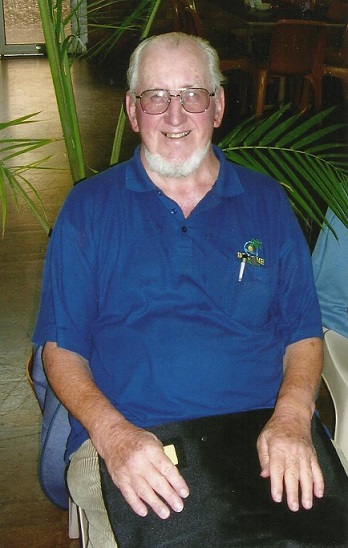
Martin in 2004
Metaphysics with its abstract categories and esoteric language presented its challenges to a 20year old seminarian who had come from a dairy farm in northern Victoria. However, it was during that course that Martin introduced us to TS Eliot’s poetry; the words from the Four Quartets have remained with me since.
“We shall not cease from exploration
And the end of all our exploring
Will be to arrive where we started
And know the place for the first time”.
These were times of exploration for me. A few years later and still at the YTU Martin offered a social anthropology course on Australian Aboriginal Society. It was a new course and I considered myself fortunate to be able to take it.
It was the era of the call for Aboriginal self-determination and of the advances in missiology and the theology of the Church in its engagement with different cultures. Around the same time Martin had attended the ordination of Patrick Dodson, the first Aboriginal priest, in Broome who was a student with us at the seminary at this time. Martin highly respected the insights that Patrick brought and looked forward to working with him.
By way of preparation for the course at the YTU Martin had facilitated a review of MSC missionary work in the NT. He had then spent some months living alone in a caravan at Peppimenarti in the Daly area. Peppimenarti was in its beginnings as a new movement of Aboriginal peoples in the NT who were leaving the larger mission communities and returning to their homelands
.I was deeply impressed with his accounts of the places both in PNG and in Northern Australia that he had visited and the ceremonies and experiences that he described.
Martin lectured on kinship, marriage arrangements, ritual and the richness of the religious life of Aboriginal society. He introduced us to the writings of the anthropologists and scholars of Aboriginal society. One of these was Dr. W.E.H. Stanner, a renowned anthropologist, who had a long association with the Murrinhpatha of Port Keats and had written of the ceremonies and their underlying values. An important theme taken up by Martin was Stanner’s expressed surprise that most Christian missionaries to the Aborigines had not recognized the richness of the religious life and outlook of Australian Aborigines.
He wrestled further with the implications of these insights in a booklet printed in 1979 and titled Old, New and Timeless some pointers towards an Aboriginal Theology.
During the Kulama ceremony at Bathurst Island and in these days with the Wadeye people who still gather with more than a thousand people for their initiation ceremonies, I find myself going back to Stanner and some of the other writings and revisiting some of the issues Martin raised as he considered the deeper issues at play and what it is that God’s spirit is calling us to now in our relationship with the first peoples of these lands.
As well as lecturing at the YTU, Martin set about the establishment of the Nelen Yubu Missiological Centre at Daly River. Its aim, as set out on the cover, of its publications was to mediate between anthropology and similar disciplines on the one hand and the richness of Aboriginal culture on the other with the emergence of a church both truly Aboriginal and truly Christian.
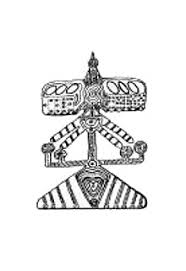
Nelen Yubu or ‘the good way’ as it translates still goes before us and there continue to be debates about how well we are traveling this road.
However, for just on 24years Martin and his secretary Keren Calvert persisted in publishing the periodical Nelen Yubu. This was a truly remarkable effort and a wonderful resource for anyone ministering today in Aboriginal communities. I would insist it be required reading for anyone who today is preparing to engage in this ministry.
The variety of articles written by many who have spent a life time walking the good way with Aboriginal people is a precious record of the issues that were being tackled from 1978 to 2002. The number of different people from around the country who contributed to this venture is remarkable. Women and men, Catholic and not Catholic, wrote on a vast array of issues related to this ministry. Of particular significance and a source of hope was the number of Aboriginal writers who also contributed.
In the later years of my studies before ordination I would meet with Martin in his office for brewed coffee and the occasional drop of whiskey. As important as it was for me to chew over the ideas and issues confronting the church’s missionary work in the NT and PNG, I found myself sometimes seeking spiritual guidance also as I confronted the various ups and downs in formation. Martin was a good listener.
I was able to steady the ship with advice sometimes given from his own insights and experiences and his familiarity with literature, philosophy and the writings of the spiritual classics and given in a friendly and congenial setting.
Our friendship has continued. I was always warmly welcomed if we met on my leave from PNG. He was familiar with the languages Tok Pisin, Hiri Motu and the places where I was working and the French and PNG MSC confreres with whom I was working.
Since beginning work in the NT in 1993 Martin has visited me both at Bathurst Island and then again at Wadeye. On Bathurst Island he gave me lessons over several beautiful dry season afternoons in fishing and how to catch the elusive barramundi.
On a visit to Wadeye I was pleased to accompany him to Peppimenarti to meet with the people and to hear him reminisce about his experiences and dreams at that time. Some years later and in spite of the ban on visits by Church personnel he was able to make an arrangement with the elders to stay there for a few weeks.
Martin has continued to show an interest in my work amongst the Aboriginal communities in the NT. At more than one Province Chapter he has spoken of the importance of continuing our presence among the Aboriginal people of the NT.
There are fewer pickups at the airport these days but he continues to always make himself available to me on my trips to Sydney and I enjoy the opportunity to share something of the life and developments in our ministry here and to receive his reflections.

July 7th. PNG pride in its saint, Peter ToRot.
July 7th. PNG pride in its saint, Peter ToRot.

The Catholic Bishops Conference PNGSI officially ended their 61st Annual General Meeting (AGM) with a thanksgiving Holy Eucharist at the CBC head office in Port Moresby on Thursday, 02 July 2020 at 5.00 pm. The celebrations incorporated the laity theme of upholding holiness, formed and sent for service. The Eucharist was also marked the life and example of Blessed Peter ToRot on 6th Martyr’s 25 years of his Beatification and 75 years anniversary of his Martyrdom.


This famous portrait of Blessed Peter ToRot was painted by a talented Korean natural Artist in Naju, Gwangju City South Korea. He is talented because to paint the colour of the Melanesian body skin he improvised so he took a photograph of my bare arm so he could get the correct or near perfect skin-colour for the portrait. He also tried his best to capture the background of Rabaul and the unique tropical volcanic panoramic natural landscape with the backdrop of the Rabaul scenic Simpson harbour.
To add further significance to this portrait was that it was specially blessed and commissioned by His Eminence Petro Cardinal Parolin -Secretary of Vatican State during his pastoral visit for the Federation of the Catholic Bishops Conferences of Oceania (FCBCO) in 2018 in Port Moresby. This portrait was especially entrusted to the Catholic Laity for the promotion of popular piety amongst the Catholic and even all Christian faithful. Thanks to my Korean friends who made arrangements for the Korean Artist to paint the portrait of Blessed Peter ToRot free of charge and request our sincere prayers for his family's intentions.

New Bishop for Kiribati. The Church Heritage of Kiribati.
New Bishop for Kiribati. The Church Heritage of Kiribati.
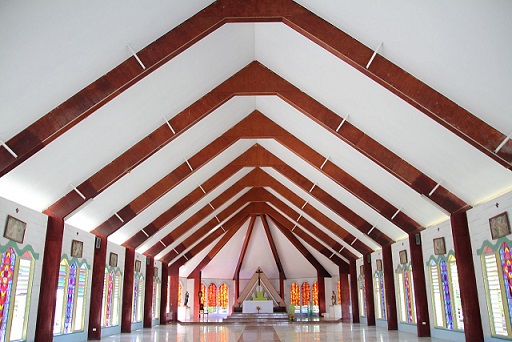
Cathedral Tarasa Atoll
Kiribati. Bishop Paul Mea MSC resigns. Monsignor Koru Tito appointed as the new Bishop.
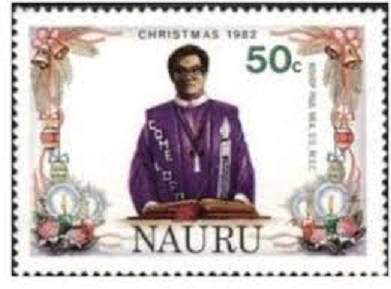
Bishopo Paul Mea MSC, Nauru stamp, Christmas 1982
Archbishop-elect of Rabaul, Rochus Tatamai MSC, writes:
Congratulations to Bishop Paul Mea MSC (Eusebius Kaiuea) for having completed the race to the finish holding on to the fort at Kiribati and Nauru. Thankfully to God for keeping you strong with good health and grace to hold on for so many years as the Local Ordinary and Chief Shepherd of your people in the middle of the Pacific Ocean.
Our congratulations go to Rev Msgr Koru Tito for your appointment as the new Bishop of Tarawa and Nauru. Be assured of our prayers and kind support.
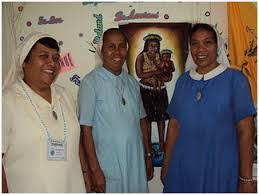
Resignation of bishop of Tarawa and Nauru, Kiribati and Nauru, and appointment of successor
The Holy Father Francis has accepted the resignation from the pastoral care of the diocese of Tarawa and Nauru, Kiribati and Nauru, presented by Bishop Paul Eusebius Mea Kaiuea, M.S.C.
At the same time the Pope appointed as bishop of the diocese of Tarawa and Nauru, Kiribati and Nauru, the Reverend Msgr. Koru Tito, of the same clergy, currently vicar general of the same see.
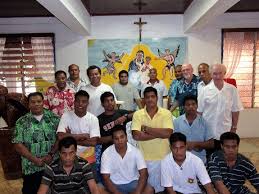
Reverend Msgr. Koru Tito
The Reverend Msgr. Koru Tito was born on 30 September 1960 in Tabiteuea, in Kiribati, in the diocese of Tarawa and Nauru. He obtained a diploma in education for the University of the South Pacific in Fiji (1977-1979), and completed his studies in philosophy and theology at the Pacific Regional Seminary of Fiji (1981-1985). For a year he attended Saint Paul’s National Seminary, Kensington, Australia (1990-1991). He holds a doctorate in theology with a specialisation in spirituality from the Pontifical Saint Thomas Aquinas University in Rome.
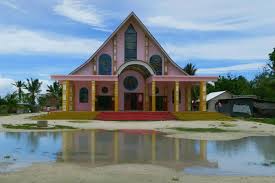
He was ordained a priest on 20 June 1987 for the diocese of Tarawa and Nauru.
After ordination he held the following offices: parish priest in the Beru, Nikumanu and Onotoa Islands (1987-1989); assistant in Saint Andrew’s parish in South Clayton, Victoria, Australia (1990-1991); and parish priest in the Kuria, Aranuka and Abemanna Islands (1991-1993). From 1993 to 200 he carried out his studies for a licentiate and doctorate in theology, with specialisation in spirituality at the Pontifical Saint Thomas Aquinas University, Rome. He then served as lecturer at the Pacific Regional Seminary (2001-2008); collaborator in the parish cathedral of Tarawa and Nauru (2008-2010), and vicar general of the diocese of Tarawa and Nauru. His sister is Sister Kateia OLSH.
Previous Bishops
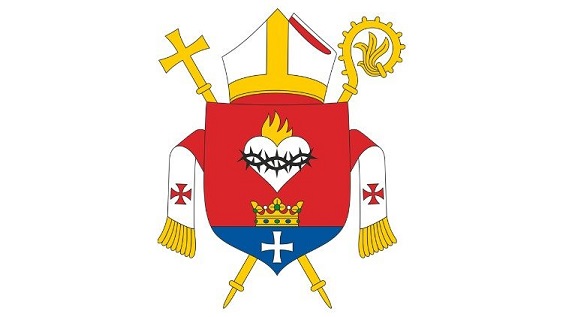
Paul Eusebius Mea Kaiuea (born 16 December 1939) has been the Roman Catholic bishop of the Diocese of Tarawa and Nauru since 1978. Kaiuea was born in Kiribati and was ordained a priest in 1969. In 1978 he succeeded French-born Pierre-Auguste-Antoine-Marie Guichet as the bishop of the diocese when it encompassed all of Kiribati, Nauru, and Tuvalu. In 1982, Tuvalu was removed from the jurisdiction of the diocese.
- Joseph-Marie Leray, MSC (27 July 1897 – 1926)
- Joseph Bach, MSC (26 January 1927 – 27 December 1933)
- Octave-Marie Terrienne, MSC (2 December 1937 – 28 February 1961)
- Pierre-Auguste-Antoine-Marie Guichet, MSC (19 July 1961 – 15 November 1978)
- Paul Eusebius Mea Kaiuea, MSC (15 November 1978 – 29 June 2020)
- Koru Tito (29 June 2020 – present)

Acknowledging Aboriginal and Torres Strait Islander Sunday, July 5th
Acknowledging Aboriginal and Torres Strait Islander Sunday, July 5th

In these days of ‘Black Lives Matter’, of ‘Closing the Gap’ discussions and proposals for the National Cabinet, we support and promote Aboriginal and Torres Strait Islander Sunday.
Bishops Commission for relations with Aboriginal and Torres Strait Islanders
Dear to the heart of the early Missionaries was the desire to make Jesus Christ and his saving love known to the Aboriginal and Torres Strait islander people and to draw them into his Kingdom of love and peace.

The full inclusion of Catholic Aboriginal and Torres Strait Islander peoples into the life of the Church is still incomplete. This Commission seeks their fuller participation in every aspect of Church life and commits itself to promoting their dignity as brothers and sisters in Christ and to addressing the challenges that face them.

Torres Strait art
The Commission also wishes to assist Aboriginal and Torres Strait lslander people to achieve their rightful and proper place in the mainstream of Australian society while preserving precious elements of their own culture.
An MSC symbolic photo

OLSH Australia Statement of Acknowledgement and Support for Our First Nations People
Any Catholic who claims “to defend the sacredness of every human life” must combat racism and exclusion in all its forms. - Pope Francis ‘In This Together 2020’

For over 100 years we, Daughters of Our Lady of the Sacred Heart, have stood respectfully with our Indigenous brothers and sisters in their suffering and struggle for justice. We have shared their life and land, worked with them, talked, laughed, cried and worshipped with them. We recognise with sadness that we have been insensitive at times and have made mistakes, but it is our privilege and joy to have always known and loved them and to recognise them as Australia’s First Nation People.
We, with the rest of the world, have watched in horror and have listened to George Floyd's dying words, 'I can't breathe'. Let us not forget our nation's own history and the lessons we must learn as we join our Indigenous sisters and brothers in their struggle for justice, change and reform.
May the love of God breathe afresh in us as we stand in solidarity with our First Nations People. May we continue to have the integrity to walk together in the ways of love, reverence, deep listening, respect, healing, reconciliation.
- Philippa Murphy fdnsc on behalf of the Daughters of Our Lady of the Sacred Heart

June 5th, 2020
The Chevalier Family, First Friday, Environmental Concern and Commitment
The Chevalier Family, First Friday Focus: Environmental Concern and Commitment
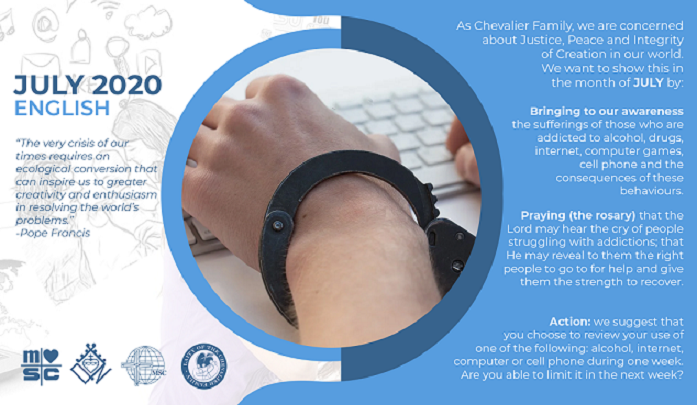
Each month, members of the Chevalier Family highlight a focus for concern, prayer and activity for the First Friday. This month, the poster mentions addictions.

What Is Social Media Addiction?
Checking and scrolling through social media has become an increasingly popular activity over the last decade. Although the majority of peoples’ use of social media is non-problematic, there is a small percentage of users that become addicted to social networking sites and engage in excessive or compulsive use. In fact, psychologists estimate that as many as 5 to 10% of Americans meet the criteria for social media addiction today. Social media addiction is a behavioral addiction that is characterized as being overly concerned about social media, driven by an uncontrollable urge to log on to or use social media, and devoting so much time and effort to social media that it impairs other important life areas.

Addictive social media use will look much like that of any other substance use disorder, including:
* mood modification (i.e., engagement in social media leads to a favorable change in emotional states),
* salience (i.e., behavioral, cognitive, and emotional preoccupation with social media),
* tolerance (i.e., ever increasing use of social media over time),

*withdrawal symptoms (i.e., experiencing unpleasant physical and emotional symptoms when social media use is restricted or stopped),
*conflict (i.e., interpersonal problems ensue because of social media usage),
*and relapse (i.e., addicted individuals quickly revert back to their excessive social media usage after an abstinence period).
________________________________________________

Acknowledging Vince Carroll MSC, 80
Acknowledging Vince Carroll MSC, 80
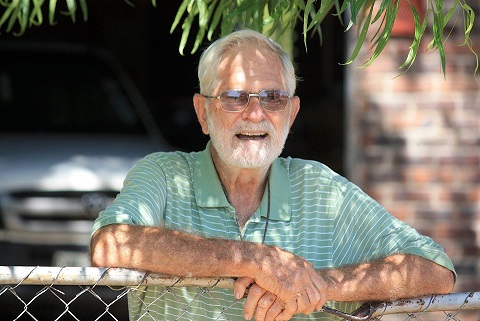
Today, Vince Carroll turns 80. A Queenslander, secondary school at Downlands, Profession, March 3rd 1959. Studies at Canberra and Croydon, including some ANU courses. Ordained July 21st 1965.
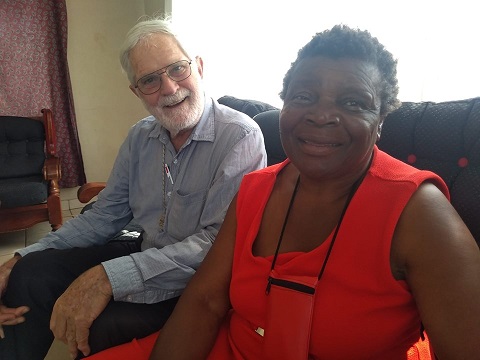
Vince’s ministry has been in MSC colleges, parishes, NT and PNG missions. In more recent decades he has been working in South Africa. Since his return, he is chaplain at Downlands.
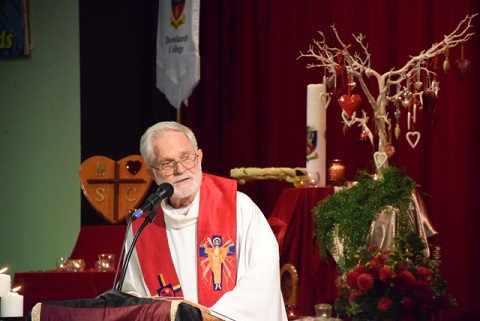
Here is an excerpt from an article he wrote some years ago (OofSHof for Our Lady of the Sacred Heart of Jesus and DoOLSG oJ for the Daughters of…)
I always love to talk about OLotSHoJ because it seems to me that Mary has always been where I, and perhaps we MSC arrive later. I want to start with a story about where I come from: I was born (in 1940) in Taroom, central Queensland, but my family started in Cracow, a Gold town, about 60 hard dirt miles away to the East. In the little church there there was a statue of the SHoJ and also of OLotSHoJ. I was later (in 2005-06) resident priest in Taroom and visited Cracow. Our family home was burnt down in Cracow and so we move to Taroom where there was a convent school for the kids to go to. Mary- OLotShoJ followed us in this fashion. Cracow has been in and out of the Toowoomba diocese and the Rockhampton diocese. (It is now only 30 bitumen road miles from Theodore).
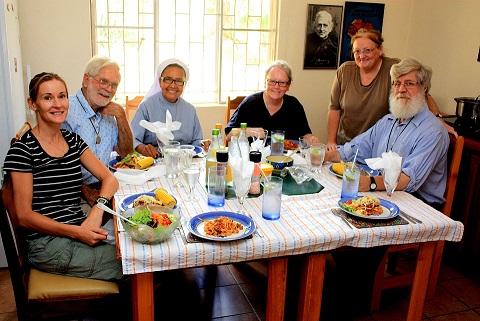
One time, it could have been when the DoOLSHoJ sisters where in Taroom a few years, and numbers had dwindled in Cracow and maybe it was now in rocky, the Taroom People pinched the statue and put in the church in Taroom. In front of a nice window there- just made for it. Well, maybe it was when Cracow came back into the Taroom parish the people from Cracow came and pinched it back! I call this the Mary Wars. And your right, when and even before the church was finally sold in Cracow and the people go to Theodore instead, the Taroom people came and pinched it again. So we have a nice grotto outside to OL of Fatima and OLotSHoJ inside. I want to if I can get behind the scriptures and see what might have been going on in the family of Jesus.
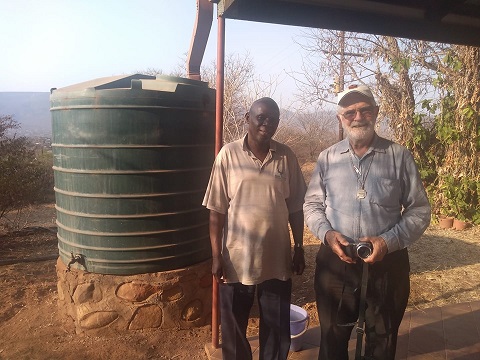
Also, I get a thrill whenever I enter a church and find Mary there: it seems as if wandering MSC Missioners, had a statue of Mary in their saddle bags as they went about in the old days, and dropped them off after using the statue for their instruction point. I found her at Longreach, at Springsure (there is the parish of OLotShHoJ, and a friend priest from the Riverine speaks of one there in a parish of the name. (There is one in the Sisters Rest Home in Gregory Terrace). In Africa- the diocese I worked in founded by MSC had Mary OLotShoJ as the patron as well as St Joseph, patron of this parish. Then next door too Darra is dedicated to OlotShoJ. And so it goes. When I arrive and OLotShoJ is there, I know the place is in good hands. Here you have the sisters all four of them and I wish them a happy Feast day, and ask you to pray for them and our Societies, and all our members, including the MSC sisters all round the world. (I think we number about 8,000 or 9,000 altogether and are growing fast in some third World countries.)
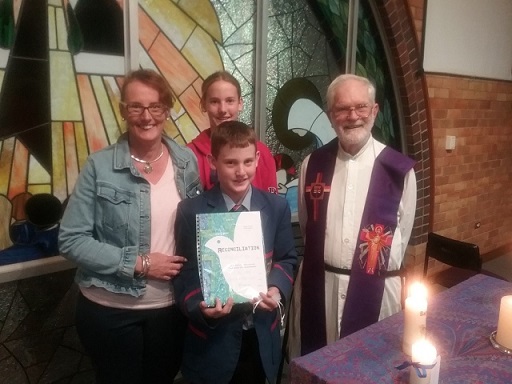
Acknowledging Michael Curran MSC, 80
Acknowledging Michael Curran MSC, 80
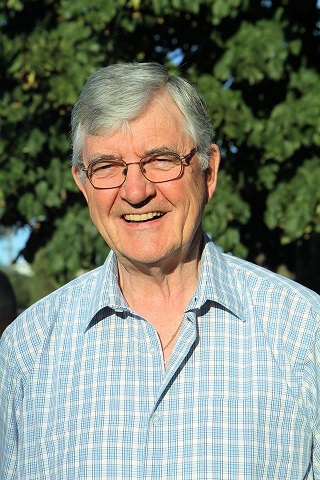
Michael Curran MSC turns 80 on July 1st. He served as Superior General of the Missionaries of the Sacred Heart, 1993-2005.
Michael is a Kerry man. He made his first profession, 21st September 1960. He went to Rome for his Licentiate in Theology, 1962-1966, and was ordained in the chapel of the student house in Via Aventina, March 23rd 1966, by Cardinal Paul Marella (who had served as Apostolic Delegate in Australia, Eddie Kelly MSC his secretary). Michael was ordained with Barry Brundell and John Bosman.
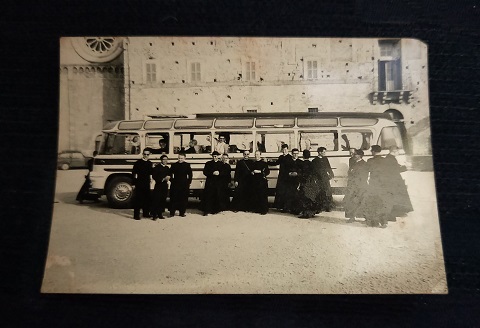
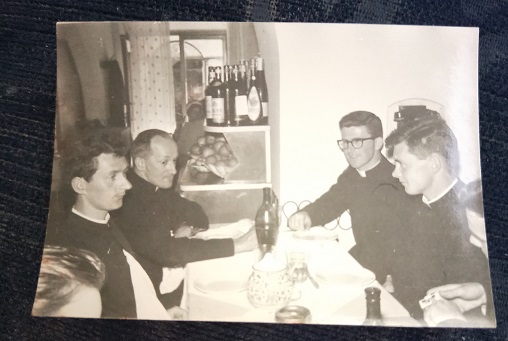
Delving into the photo archive, here is how student bus outings looked in 1963, 57 years ago, Assisi. At the table, from the left, Michael, Peter Malone, George Lockhead, Bill Lyons. Peter Malone remembers that he walked to and from the Gregorian University every day for three and a half years. After deaconate ordination, we were permitted to ride the Province bikes!
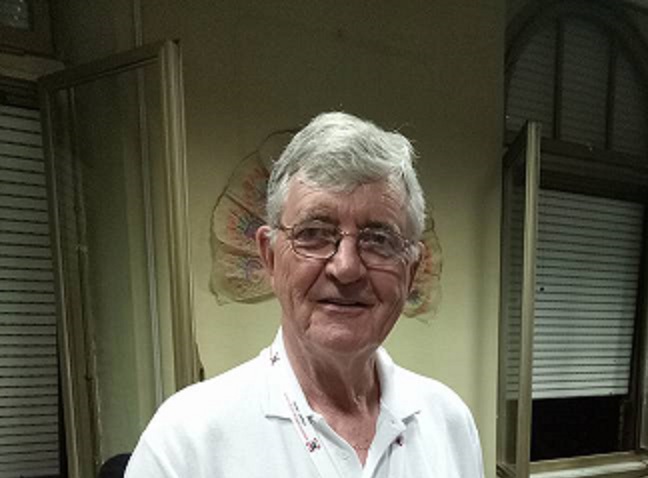
At the 2017 General Chapter
Michael worked in Ireland, in Venezuela, where the Irish Province had a mission outreach. He was the Irish Provincial from 1981- 1987. He visited Australia for the General Conference of 1985 which was held at Douglas Park. He also visited in his role as Superior General.
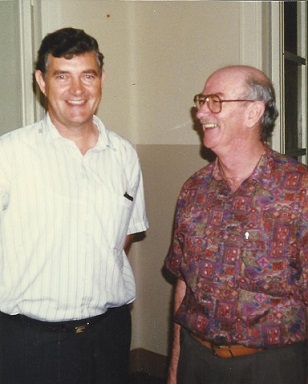
1994, Visiting as Superior General, with Brian Gallagher the then Provincial
____________________________________________________________________________

SOME SIGNIFICANT JULY DAYS FOR THE CHEVALIER FAMILY, 2020
SOME SIGNIFICANT JULY DAYS FOR THE CHEVALIER FAMILY, 2020.
July seems to have been a mission establishing month: MSC in Yule Island, PNG; MSC in Bangalore, India; MSC in Canada; MSC Sisters in Peru.
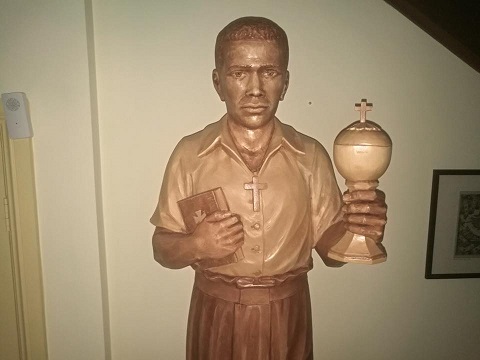
Statue of Blessed Peter to Rot
It is also a month of memories of murdered MSCs, in Indonesia during World War II, of Peter To Rot in New Britain and in Central America of Faustino Villneuva.
1 July, 1885
Father Verjus, Brothers Salvator Gasbarra and Nicolaus Marconi arrive in Yule Island. The mission in Papua begins!!
2 July, 1985
Opening of the first MSC House in India. the original house was rented from the Holy Cross Fathers, in Bangalore.
4 July, 1885
Father Verjus celebrates the first Eucharist on Yule Island and 48 years later in 1933 Monsignor de Boismenu consecrates a chapel built on the site of the first Eucharist.
5 July, 1941
Unveiling of the statue of Our Lady of the Sacred Heart, Miribel, France. The statue is 33 meters high!
7 July, 1945
The death of Peter To Rot, Martyr and Catechist in PNG. He was beatified, 17 December, 1995.
10 July, 1980
Father Faustino Villanueva, MSC, from the Spanish MSC Province, is assassinated in Joyabaj, Guatemala.
11 July, 1946
The body of Marie Louise Hartzer is transferred from Thuin, Belgium to the Mother House of the Daughters of Our Lady of the Sacred Heart in Issoudun.
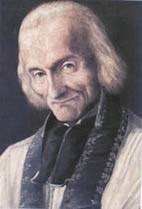
St John Vianney
14 July, 1859
Father Jules Chevalier visits the Curé d'Ars, Jean-Marie Vianney. The Curé confirms Chevalier in his mission as founder! Two days after their visit, Father Chevalier and Piperon start a novena with the Curé d'Ars, who died shortly after on 4 August, 1859.
17 July, 1874
The church in Issoudun is erected as a Minor Basilica: the Basilica of Our Lady of the Sacred Heart.
19 July, 1876
Father Chevalier buries his mother in Richelieu.
19 July, 1947
The first missionary group of MSC Sisters leave Germany to begin a mission in Peru.
20 July, 1926
Monsignor Couppé, MSC, founder of the Daughters of Mary Immaculate, a local congregation in Papua New Guinea, dies at Douglas Park in Australia.
21 July, 1896
Father H. Linckens, MSC, is appointed Provincial of the newly-erected German MSC Province.
21 July, 1982
Father Eugene Cuskelly, MSC, former Superior General, is ordained auxiliary bishop of Brisbane, in Australia.
24 July, 1828
Jean Charles Piperon, one of Father Chevalier's faithful founding companions, was born about 50 kilometres from Issoudun, at Vierzon, France.
30 July, 1942
Monsignor Aerts and 12 Dutch MSC confreres are killed at Langgur, Indonesia, during World War II.

Tomb of Mons Aerts MSC and the confreres killed at Langgur
31 July, 1873
Father J.B. Chappel and Brother H. Dechâtre leave France for the very first MSC overseas mission: the mission in Canada! In 1875, they establish the first MSC residence in the USA, at Watertown, New York State. The present MSC Superior General, Father Mark McDonald, MSC, was born and grew up in Watertown!
31 July, 1878
Father Chevalier signs the purchase deed of the Church of St James of the Spaniards, Piazza Navona, Rome. Today it is known as the Church of Our Lady of the Sacred Heart.
